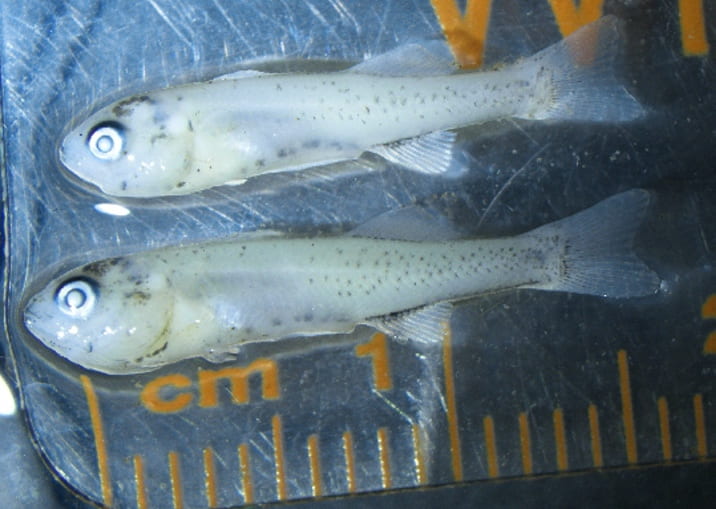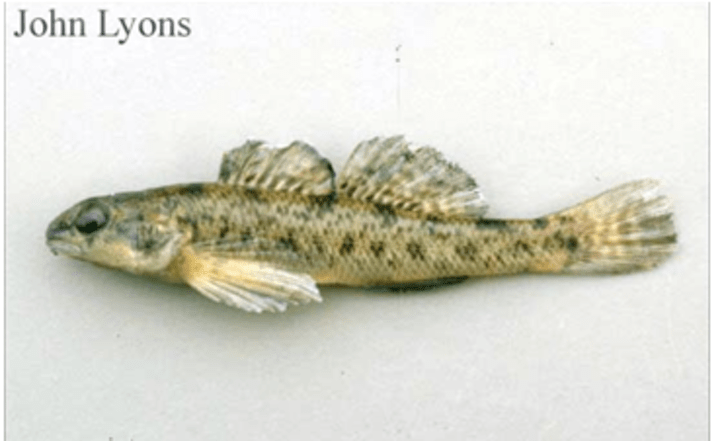Key Characteristics:
- 15 preanal myomeres
- 21 postanal myomeres
- Markings (X, Y, & W) on lateral sides

Larval Johnny Darters. 15 mm. United States Fish Wildlife Service. Green Bay, WI. Ashley Smith. 2017.

Juvenile Johnny Darter. 49 mm. United States Fish Wildlife Service. Green Bay, WI. Adam Dziewa. 2018.

Juvenile Johnny Darter. 49 mm. United States Fish Wildlife Service. Green Bay, WI. Adam Dziewa. 2018.
- Body not elongated, eel-shaped, round in transverse section, uniformly pigmented (1B)
- Chin barbels absent (3B)
- Snout short, its length usually less than 10% TL; median fins otherwise (5B)
- Median fins or finfolds showing distinct separation (7B)
- No adipose fin, or demarcation of one, in finfold (10B)
- Preanal myomeres greater than or equal to postanal myomeres (14A)
- Preanal myomeres approximately equal to postanal myomeres (difference five myomeres or less) (15A)
- Total myomeres greater than or equal to 35 (20A)
- Percidae – Perches
Adult History
- Physical Description
- Markings (X, Y, & W) on lateral sides, lack of frenum (no connection between upper lip and snout), single anal spine (7-9 rays), brown/green sides and back with dark spots, brown/yellow scales, dark black line from mouth to eye, dorsal fin with two lobes (first fin: 7-9 spines & second fin: 11-14 rays), brown spots on dorsal fin, and brown stripes on tail fin
- Spawning Habitat
- Lakes, creeks, streams, and tributaries
- Less than 0.5 meters deep
- Spawning Substrate
- Eggs are deposited on the underside of debris and rocks
- Sandy, rocky, muddy substrates
- Closest to the bottom of the water body
- Slow-moving water needed
- Spawning Behavior
- Polygynandry Behavior
- Males migrate to the shoreline to establish nests before female arrival
- Females move to multiple males’ nests to spawn
- Eggs sink to the bottom and attach to the underside of rocks or vegetation
- Males build and guard their nests
- Clean their nest with their fins
- Cleaning eggs
- Fanning with their pectoral fin or rubbing them (fins)
- Courtship behavior
- Male will swim upside down by his nest or spawning object
- Time of Year
- April – June in Lake Michigan
- Spawning typically takes place at water temperatures of 50 – 70°F
- Diet (Carnivore/Insectivore)
- Waterfleas, insect larvae, and aquatic crustaceans
- Eggs are deposited on the underside of debris and rocks

